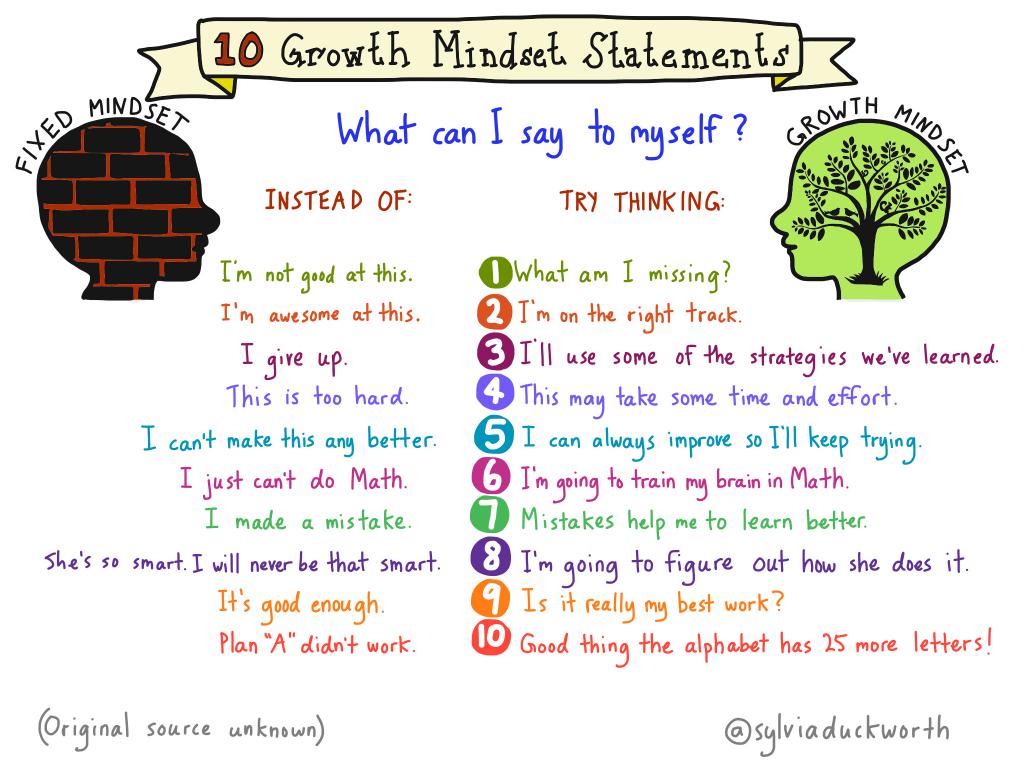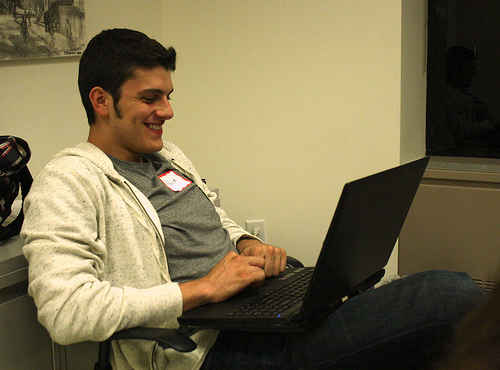Much like the recent buzz around AI, podcasts are gaining momentum in classrooms everywhere.
In this post, I will share some highlights encountered in a podcasting project as part of my RECIT dossier to support the integration of technology in education. I will talk about some of the challenges encountered, and what I would do differently next time.
If you have been thinking about taking a shot at podcasting with your class, I hope the words on this page can lend inspiration for you to take the next step with your project. This post also provides an opportunity to celebrate an educational journey and acknowledge the people who were instrumental in bringing this active research to life.
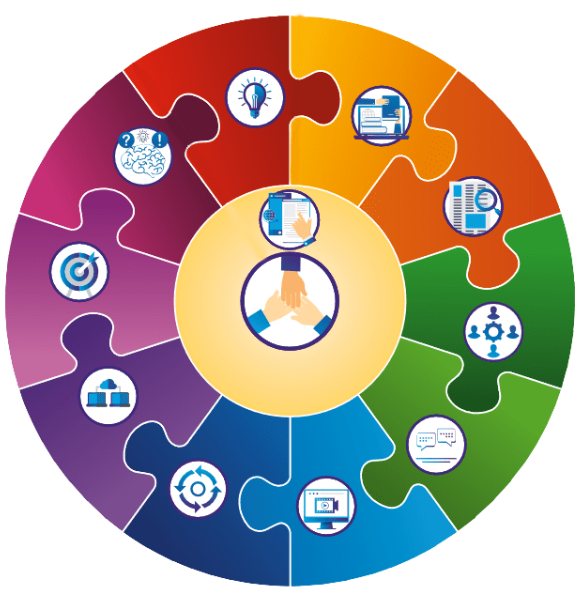
Before going any further, let’s get on the same page about Quebec’s Digital Competency Framework (DCF). Its goal is for all citizens to continuously improve personal skills in using technology for all aspects of life. The framework refers to, “confident, critical, and creative use of digital technologies” as this applies to all stakeholders in education. We know that the DCF is one holistic competency with 12 interdependent dimensions. These dimensions frame everything we do when using technology but unfortunately, they take a back seat behind the show-stealing digital outputs.
How do we build Digital Competency? We need to be mindful and intentional about it, and make it part of our collective vocabulary when using digital technology. With the emergence of artificial intelligence, we see that Digital Competency may well be the difference between using technology or being used by it. The full DCF document and further resources are available on the Ministère de l’Éducation’s Digital Action Plan website.
Bringing the content and the tech together
I explored some podcasting possibilities as part of a digital media project with senior high school students at Macdonald High School. I partnered with teacher Rhiannon Sparkes, to introduce the Digital Competency Podcast project to 3 high school classes. Ms. Sparkes’ classes were already well-versed in podcasting as part of their Secondary 4 and 5 media classes. They had already completed two previous podcast assignments covering various topics which fall within their course requirements. However, they were not familiar with the Digital Competency Framework as elaborated by the Ministry of Education’s Digital Action Plan.
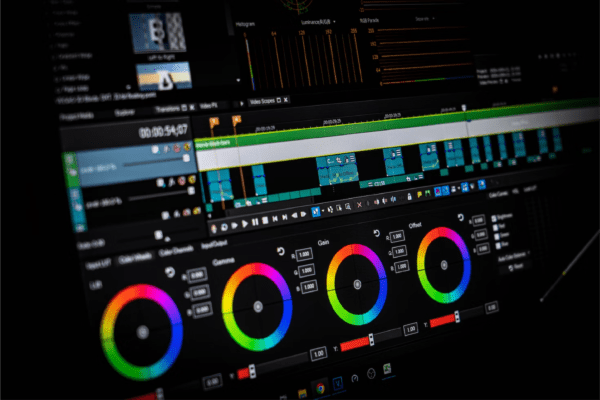
The Media classes provided a perfect opportunity to use podcasting as a vehicle for deeper learning with a greater focus on the process. We could bring the Digital Competency conversation to light, while capitalizing on the slick podcasts which students were already familiar with producing. Previous creations were well polished with jingles and trendy effects, but those efforts sometimes overshadowed the narrated content and the message being conveyed. Consequently, the dialogue was typically improvised. This was all to be expected. It reminded me of early days of getting to know Powerpoint. More energy on the slide transitions and animations, but less on the point to make.
A little scaffolding
We introduced the project to the students with a slide deck to frame Why, How, and What for the assignment. Each student was responsible for a three minute clip and a variety of Digital Competency resources were consulted during this project. Some of the reference material used can be found here on the Digital Competency in Action website while the others are listed at the bottom of this post.
The short clip expected from the students was divided into smaller chunks and most of these pieces could be collaboratively pre-scripted:
- Introductions were consistent across all podcasts
- Digital Competency descriptions were taken directly from the MEQ documentation
- Students used their own words to demonstrate understanding
The only truly autonomous contribution was in choosing a personal example to support understanding of the dimension which would build the collective comprehension of Digital Competency. All this is to say that we kept the content production as simple as possible in order to instill confidence for producing an impactful script, while scaffolding students as they worked toward less improvisational content.
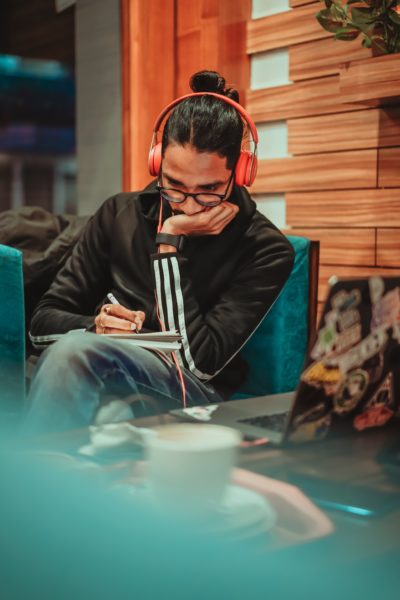
Adapting on-the-fly
Beyond structuring the project into manageable parts, there were other logistical items to deal with as we launched into this project. We had 70 students involved and we wanted to maximize participation. However, the topic did not initially foster engagement for the creators. The students were keen to do the work, but many were excited to talk about the same one or two dimensions. The more abstract dimensions were never going to get covered if we left it completely to choice.
We opted to use some form of choice in order to cover all 12 dimensions adequately. Our solution was for each student to address only 2 of the 12 dimensions: One was of their personal preference, and the second was randomly distributed. This strategy enabled broad enough coverage with minimal redundancy and ensured we would have a podcast for every dimension when the time came to assemble.
Reflecting on the product
The final podcast was not as polished as intended when we reached the final days of the project but this was to be expected. Remember, this was a pilot project.
We knew going in that we would make use of previously acquired skills for recording a podcast. The bigger growing pains would reside in the scripted content to relay our message. Despite some previous experience with smaller projects we wanted to expose obstacles in running a project of this scale with greater collaboration across the group involved. This would help in being proactive with obstacles when replicating such a project in a different subject, or with students in different grades.
A major obstacle was in compiling audio files from multiple sources and formats. There were close to 70 students submitting content in MP3 and WAV audio formats but also some video formats in MP4 and .MOV for a few who created the project in iMovie. This was not optimal for technical assembly and certainly something to keep in mind for when we replicate such a collaborative project. Add unprecedented public health restrictions with unforeseen absenteeism, and our task was further constrained.
Reflecting on the process
Regardless of the technical outcome, the pedagogical intention was still successful. Students learned about digital competency as a primary outcome, while still perfecting abilities with an emerging technology. Coincidentally, that experience ties to dimension 2 of the Framework which is Developing and Mobilizing Technological Skill. It was a nice way to make abstract concepts more concrete by actually applying the theory behind the Digital Competency Framework. Though students may not have become experts in podcasting, they did learn about a variety of podcasting platforms and scriptwriting practices which will lead to a better outcome in future productions.

I have included this 4-minute portion as a taste of what the full podcast could be. The compressed clip only addresses two of the twelve dimensions, but you will get a sense of what the full production could sound like. The full version may continue to be a work in progress indefinitely. In fact, it may be time to take our lessons learned and apply them to a brand new context.
Takeaways
More is more! The good news is that we covered all 12 dimensions and then some! There was an abundance of examples and there were more than 3 or 4 versions of each dimension to choose from, in selecting the best one for publication. An abundance of content meant richer reflections on digital competency dimensions, as students interacted with each other during this process.
Less is also more! The volume of audio material (pun intended) from so many sources was a little overwhelming. We received 2 clips each from approximately 70 individuals. Students also produced content in a variety of formats using an assortment of platforms and tools. The editing and compilation process was extremely challenging since audio quality fluctuations, background noise, and ambient sound made it difficult to pull the project together in a coherent way. Consider using a dynamic microphone! They are less sensitive than generic ones and block out background noise.
Next time
One podcast for one class is plenty! I would not run one project across 3 classes and 2 grade levels. The students need access to each other to keep the project moving in a common direction but also for immediate support in troubleshooting obstacles encountered.
Students will benefit by working in groups, and you can reduce expected content within these groups. Looking back on my project, I would have had students work in pairs on one dimension instead of having individuals work on 2 dimensions each. We could have ended up with 12 pieces to assemble instead of 140!
Have a designated recording station in one isolated location. Regardless of the equipment used for recording, all of the content would have uniform ambient sound and background noise.
Tell us about your educational podcasting experiences. We want to celebrate your experiences and even join you along your journey. You can reach out for support through the Local RECIT person at your School Board or directly with us via the LEARN Quebec contact page.
Podcasting Tools and Resources
Here are some tools and resources to explore to support your own venture into educational podcasting .
https://www.audacityteam.org/ Audacity free audio creation and editing software.
https://123apps.com/ Online tool for converting audio files and much more.
Podcasting in Social Science Classrooms
Podcasts for Professional Development Blog post by Matt Russell (WQSB)
ShiftEd Podcast series on the LEARN Quebec Youtube channel
Podcast: Digital Competency Slidedeck used to introduce the podcast assignment to students. Contains an overview of each Dimension of the Digital Competency Framework.
Digital Competency examples Padlet Collaborative sharing tool used to leave a trail of examples for each dimension.
Photo credits
Tower of radios from Zoltan Fekeshazy
Editing software picture from Nejc Soklič
Working with headphones from Dollar Gill
Phone reflecting light from Rodion Kutsaiev



